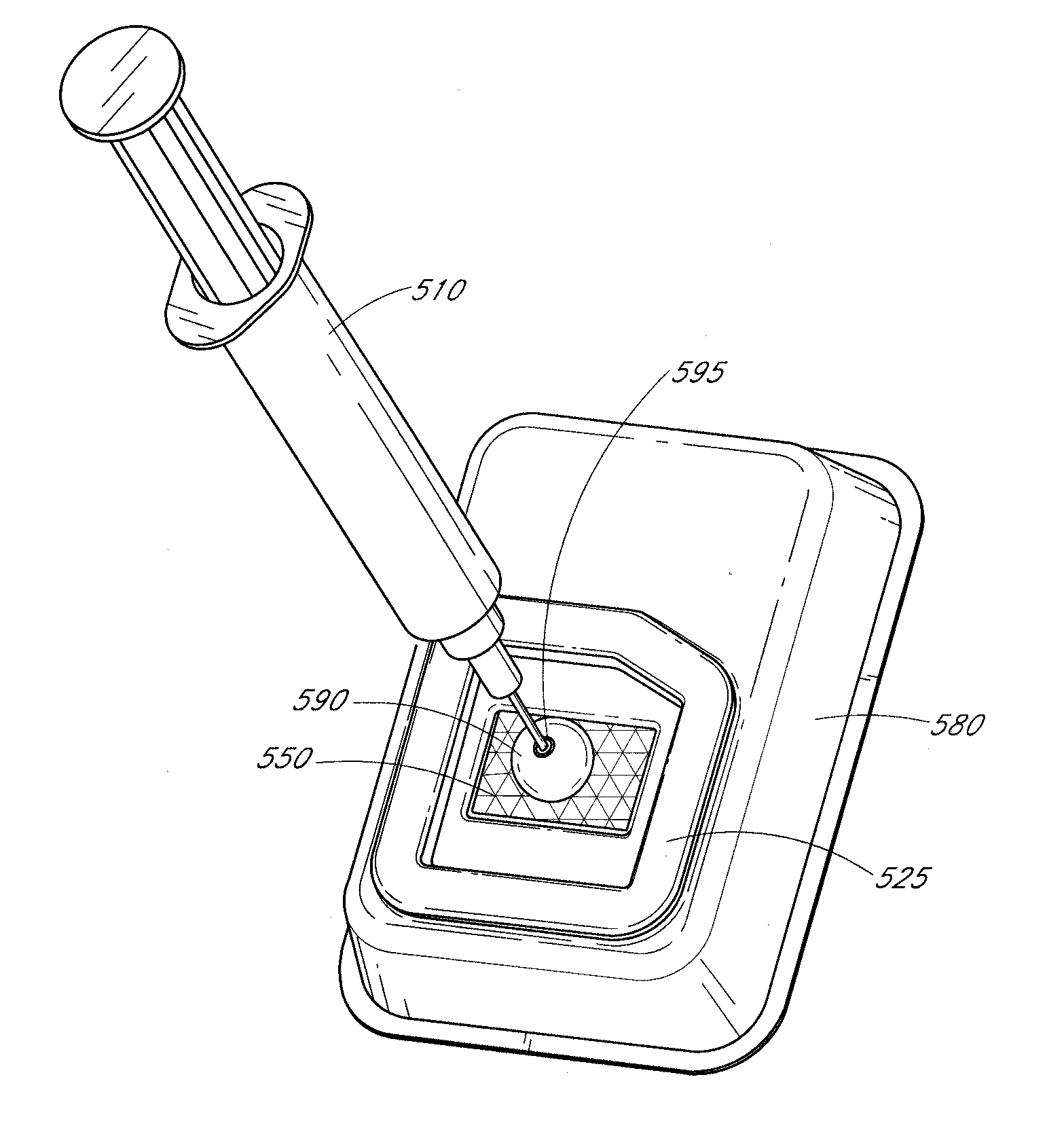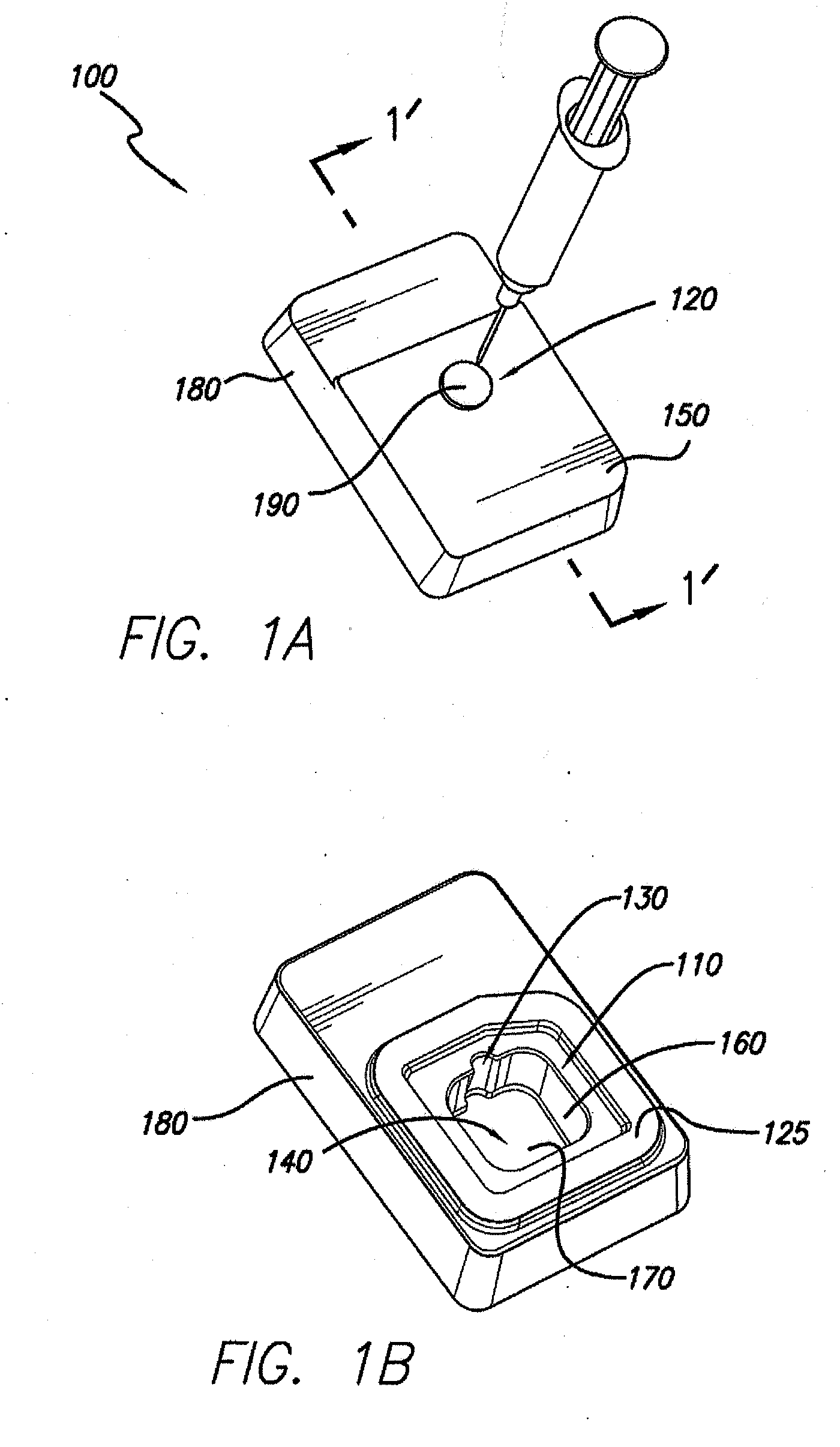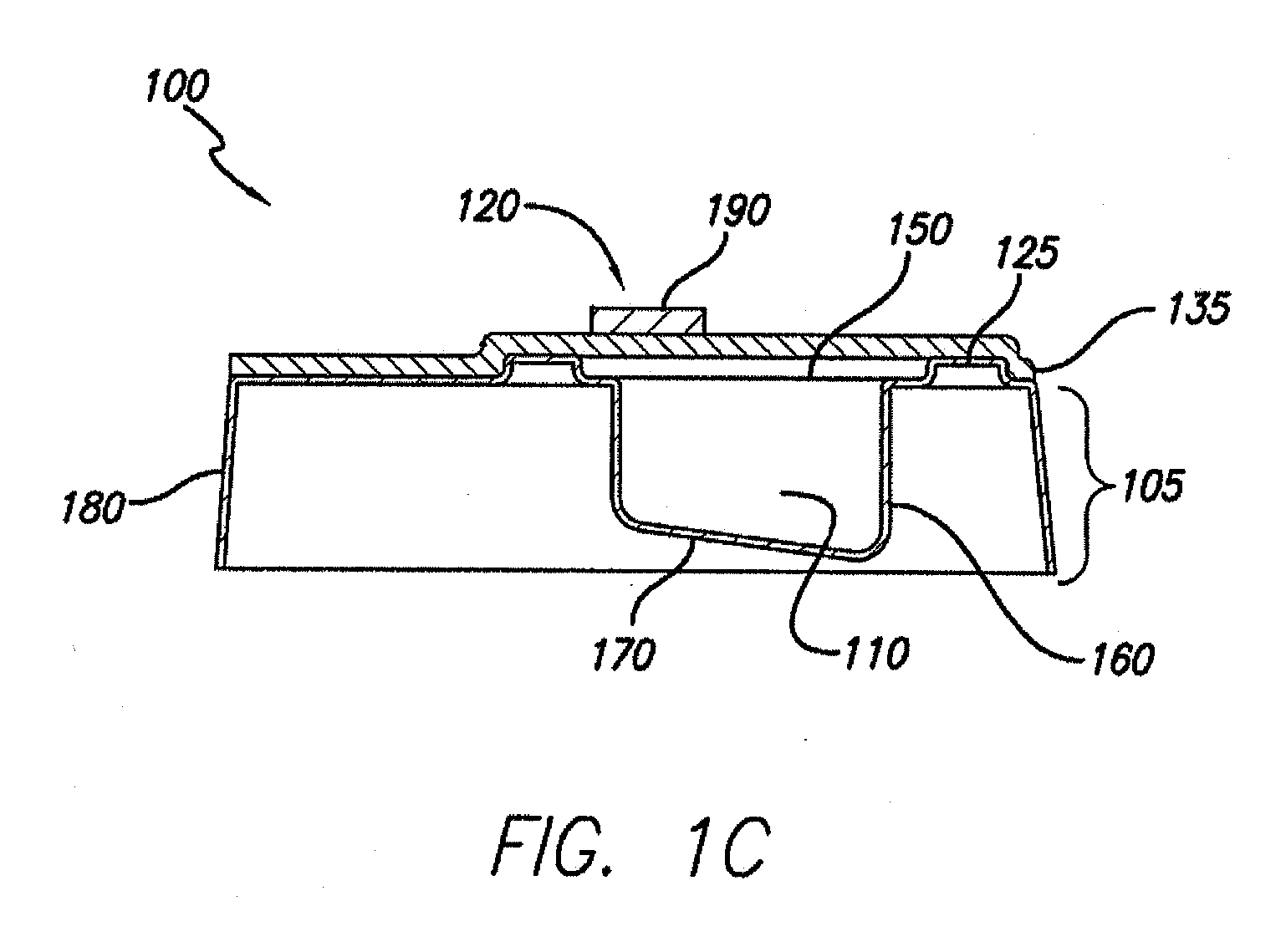Processes and systems for loading medical implants with simulative growth agents
a technology of simulative growth agent and process, applied in the field of medical implants, can solve the problems of pain in some patients, slow infusion of liquid through the pores of the graft, and inability to ensure thorough and complete infusion of liquid, so as to achieve effective and uniform seeding of medical grafts
- Summary
- Abstract
- Description
- Claims
- Application Information
AI Technical Summary
Benefits of technology
Problems solved by technology
Method used
Image
Examples
experiment 1
[0103]An experiment was conducted using an aqueous solution containing a known concentration of rhBMP-2 and multiple ACS sponges. 150 μg of rhBMP-2 (Infuse®, Medtronic, Inc., Memphis, Tenn.) per cc of carrier was delivered into absorbable collagen sponges (ACS, Medtronic, Inc.), using either a drip (soaking) method or via Vacuum Infused Packaging (VIP). The rhBMP-2 applied by the drip method was allowed to soak for 15 minutes while the VIP samples were only allowed 1 minute for binding. Unbound rhBMP-2 was rinsed out of the ACS sponges by being placed in excess saline on an orbital shaker at 37° C. for 1 hour. An rhBMP-2 ELISA kit (Leinco Technologies, Inc., St. Louis, Mo.) was used to determine the amount of rhBMP-2 that was bound to the ACS samples after the 1 hour rinse. Data were then analyzed using a one-way ANOVA (p<0.05) and Tukey's post-hoc honest significant difference test for multiple comparisons.
[0104]The amount of rhBMP-2 bound to the dripped ACS after 15 minutes of bin...
experiment 2
[0105]A similar experiment was performed using allograft bone tissue, instead of ACS sponges, to further verify that the foregoing “surprising and unexpected” results were not unique to ACS sponges. 150 μg of rhBMP-2 (Infuse®, Medtronic, Inc., Memphis, Tenn.) per cc of carrier was delivered to multiple allograft bone tissue samples using either a drip (soaking) method or via Vacuum Infused Packaging (VIP). The rhBMP-2 applied by the drip method was allowed to soak for 15 minutes while the VIP samples were only allowed 1 minute for binding. Unbound rhBMP-2 was rinsed out of the allograft bone tissue samples by placing them in excess saline on an orbital shaker at 37° C. for 1 hour. An rhBMP-2 ELISA kit (Leinco Technologies, Inc., St. Louis, Mo.) was used to determine the amount of rhBMP-2 that was bound to the allograft bone tissue samples after the 1 hour rinse. Data were then analyzed using a one-way ANOVA (p<0.05) and Tukey's post-hoc honest significant difference test for multipl...
PUM
| Property | Measurement | Unit |
|---|---|---|
| absolute pressure | aaaaa | aaaaa |
| absolute pressure | aaaaa | aaaaa |
| absolute pressure | aaaaa | aaaaa |
Abstract
Description
Claims
Application Information
 Login to View More
Login to View More - R&D
- Intellectual Property
- Life Sciences
- Materials
- Tech Scout
- Unparalleled Data Quality
- Higher Quality Content
- 60% Fewer Hallucinations
Browse by: Latest US Patents, China's latest patents, Technical Efficacy Thesaurus, Application Domain, Technology Topic, Popular Technical Reports.
© 2025 PatSnap. All rights reserved.Legal|Privacy policy|Modern Slavery Act Transparency Statement|Sitemap|About US| Contact US: help@patsnap.com



